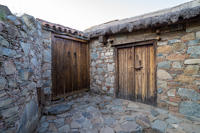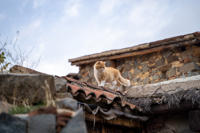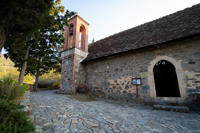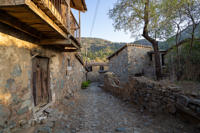Fikardou Village
Nestled in the south eastern slopes of the Troodos Mountains, Fikardou Village is a charming settlement that takes you back to the medieval times of Cyprus. The village has managed to retain its traditional architecture and rural atmosphere, despite being almost deserted today. Fikardou is owned by the Department of Antiquities, which declared it a World Heritage Site in 1978. Let's dive into the history and unique features of this fascinating place.
The history of Fikardou dates back to the 8th century when dissident groups formed in the region to avoid oppression and establish their own rules for survival. According to legend, the region was controlled by two dominant clans, the Kourries from the Kourion area and the Braves from the Tamassos area. In 700 AD, a large number of Cypriots who were war prisoners repatriated from Cyzicus Propontis joined and strengthened the power of the fugitive groups in the region, forcing the government to pardon these outlaws.
The name Fikardou is believed to have originated from the family name of the feudal overlords of the area, dating back to Lusignan times. The earliest mention of the family is found after the 1450s, and in 1473, Thomas Fikardos was mentioned as the royal chancellor present at the deathbed of James II. However, the village administratively belonged to the Machairas Monastery during the Komnenos dynasty (1081-1185). The Monastery sources from that period state that the Fikardou inhabitants were mainly engaged in harvesting Olea oleaster (young wild olive trees) from the forest, which was one of the main profitable activities of the area.
The Knights Templar administered most of the region of Pitsilia from 1195 to 1310 until the criminal prosecutions of the Templars as heretics. The Knights of St. John inherited their privileges, including Fikardou.
The traditional architecture of Fikardou is a mix of Byzantine, Venetian, and Ottoman styles. The stone houses, narrow streets, and alleys give a feeling of timelessness and nostalgia. The village is located at an altitude of 900 meters above sea level, and its unique location offers stunning views of the surrounding Troodos Mountains.
One of the most popular attractions in Fikardou is the House of Katsinioros, a museum that showcases the life and traditions of the village. The house dates back to the 18th century and has been preserved to maintain its original architecture and design. Visitors can explore the various rooms, including the kitchen, living room, and bedrooms, and learn about the daily lives of the villagers in the past.
Another highlight of Fikardou is the Church of Agios Ioannis Prodromos, which is located in the center of the village. The church dates back to the 18th century and features beautiful frescoes, including a depiction of the Last Judgment. The church is open for visitors to explore, and the peaceful atmosphere inside is perfect for quiet contemplation.
Fikardou is also an excellent base for exploring the surrounding areas. Nearby, you can visit the traditional Lazanias village, which is known for its pottery and weaving. The Machairas Monastery is also a short drive away and is a significant religious site in Cyprus.
The Fikardou village is a must-see destination for anyone interested in the history and culture of Cyprus. The village's well-preserved medieval architecture and rich history make it a unique and fascinating place to explore. Whether you are interested in exploring the narrow alleys and stone-built houses, visiting the museums and churches, or sampling traditional Cypriot cuisine, Fikardou has something to offer everyone. So why not plan a visit to Fikardou and discover the charms of this remarkable village for yourself?
General Information
Ratings
Spectacular
1
Fantastic
0
Enjoyable
0
Average
0
Terrible
0
5.0





